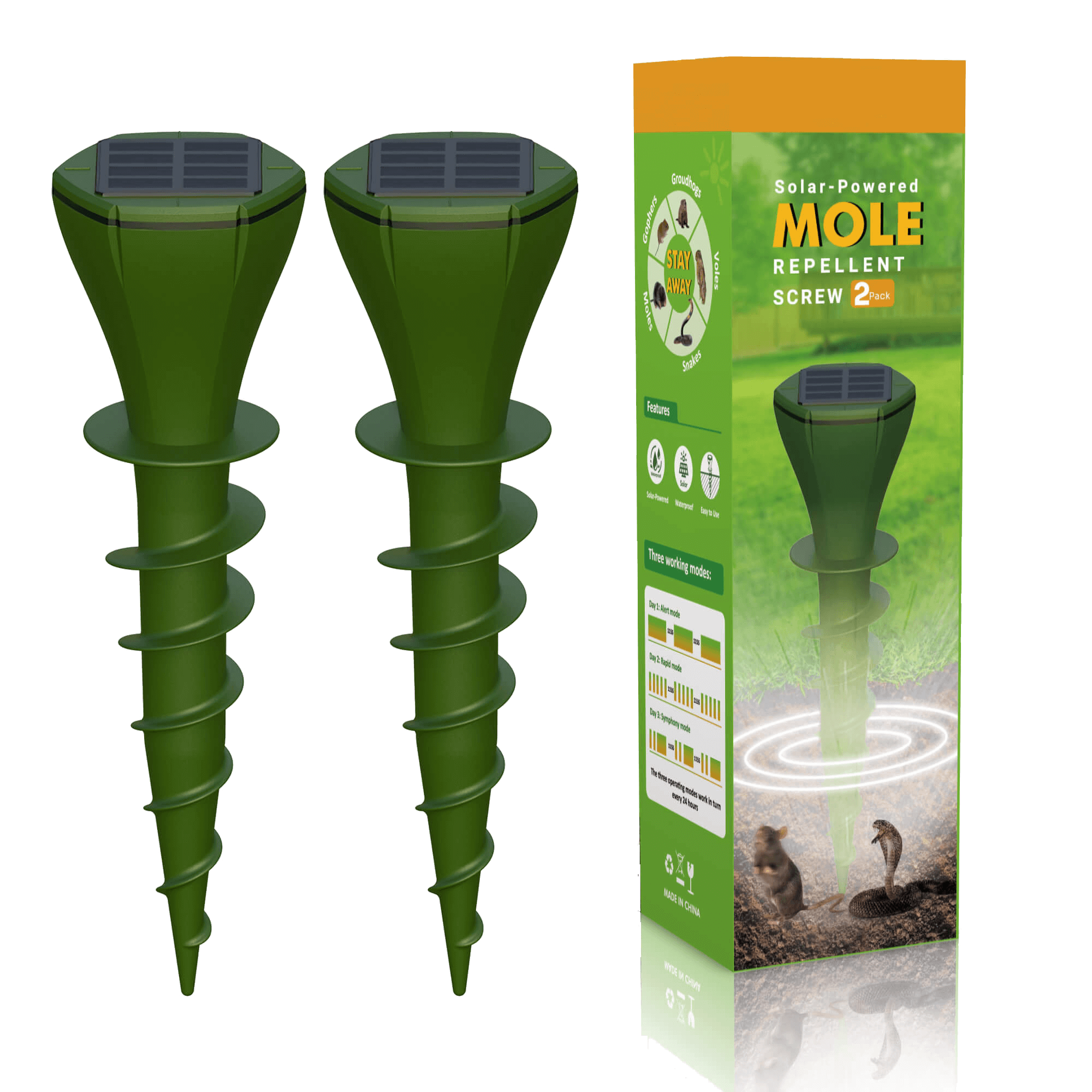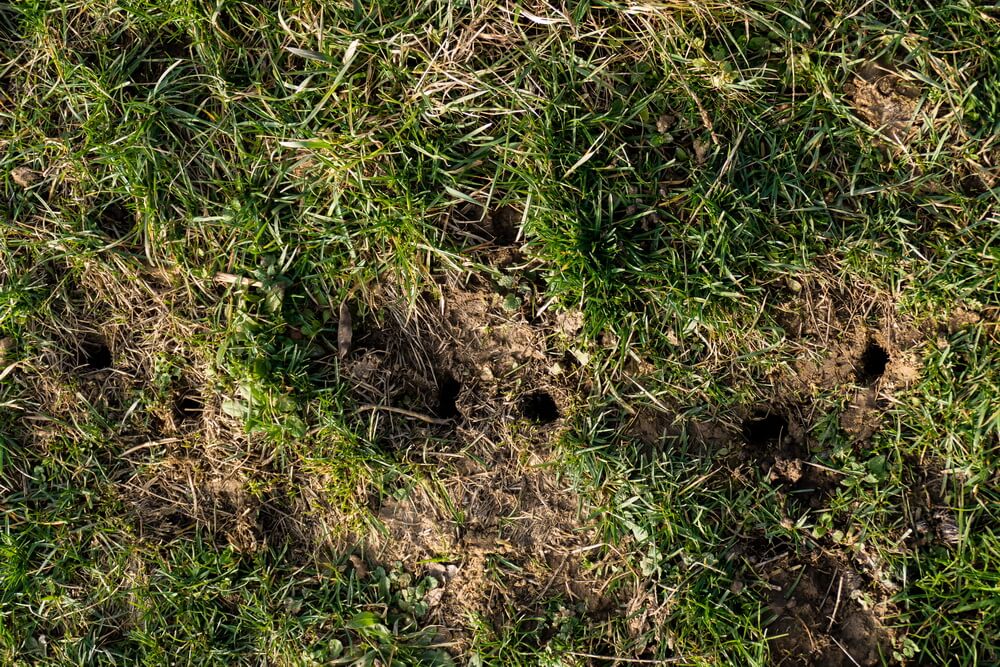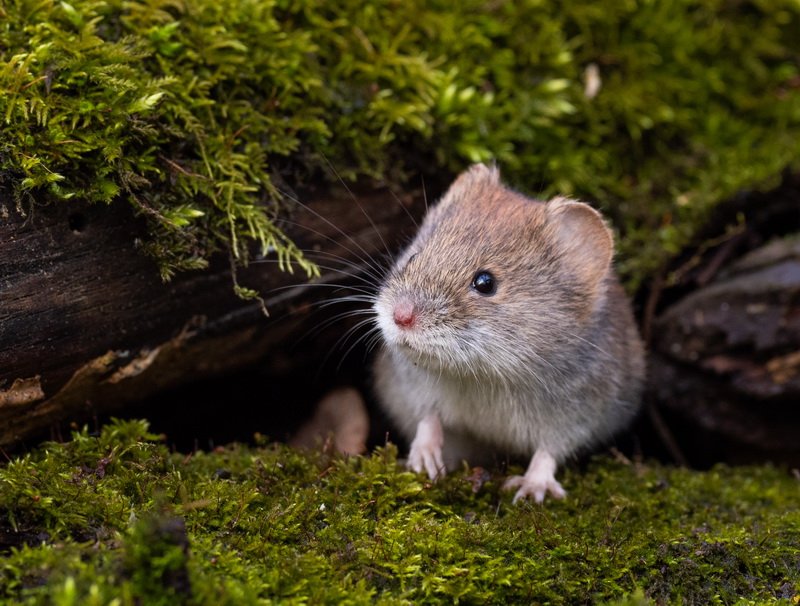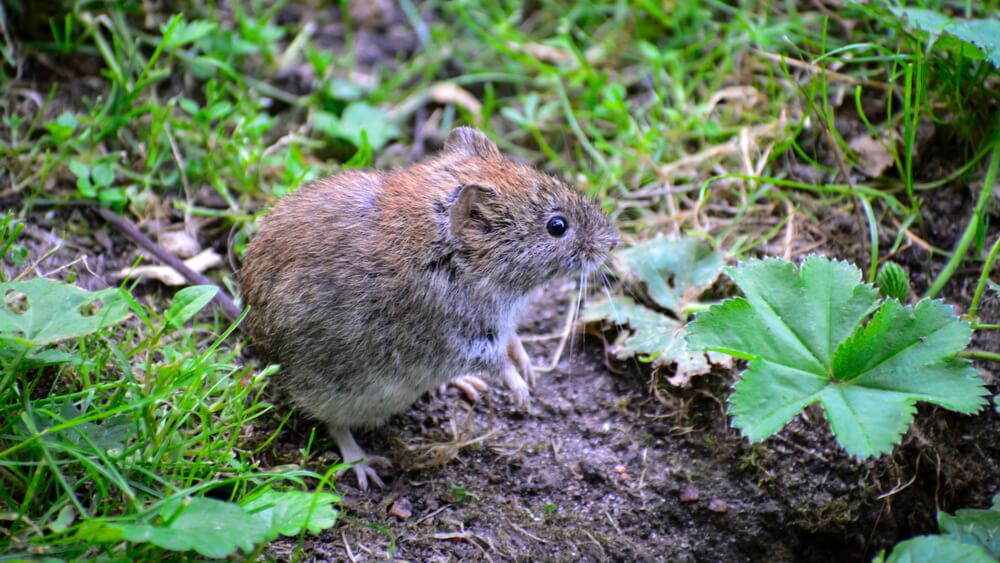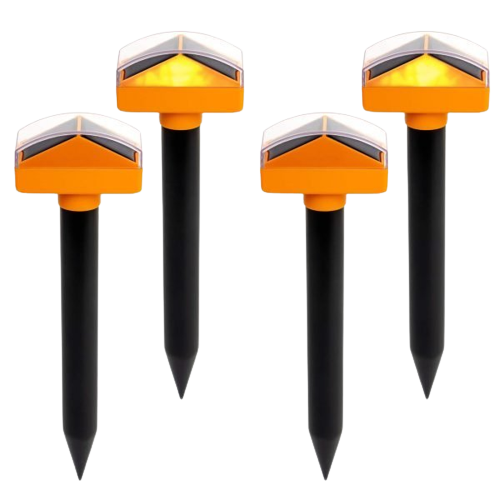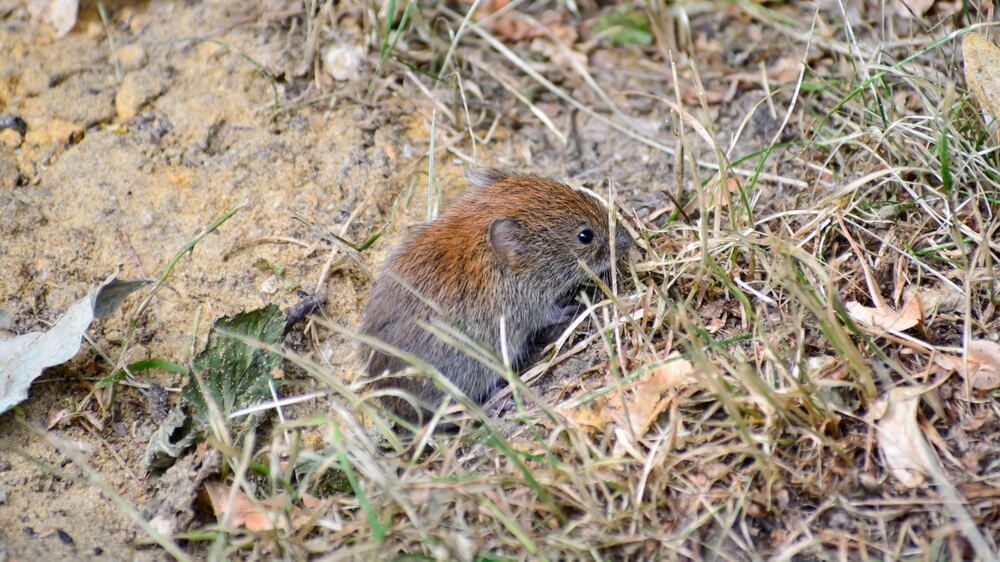Originally published at: Learn - Thanos Home
WHAT YOU WILL LEARN
A vole is a mouse look alike from the family of rodents.
This rodent loves to damage plants, trees, shrubs, and roots, while its affinity for ground covers and its small size makes it hard to control.
A vole is about four to nine inches long and has an average life span of less than a year.
As a rodent, it is very fertile and reproduces all year round.
A vole can reproduce up to fifty thousand voles in two years.
It is active all year round, day and night, and never hibernates.
A vole can make several burrows in the ground by connecting extensive runways to make shelter and offer protection for its colony.
Voles are known as meadow mice or field mice and can be identified by their small size, short tail, round nose, and greyer color.
They also reproduce in more volume than mice.
Voles differ from moles as their tails are not more than a few inches long, look more-stocky, and furs are fuzzier than moles.
This post provides helpful tips on how to get rid of voles, home remedies to get rid of them, and other essential things.
Voles as pests
Like other rodents, voles pose an economic problem as they are pests that damage plants and shrubs.
They also gnaw at the barks of trees and leave gnaw marks.
They also attract predatory wildlife like foxes or coyotes to your property.
When you have a vole infestation in your yard or lawn, garden or on your property, you may need to ask a wildlife exterminator to eradicate it on your behalf.
The wildlife exterminator will use poison baits to kill these rodents as well as others on your property.
However, if you think you can manage it on your own, there are home remedies and other great vole control methods you can employ.
First, you have to identify if a vole is responsible for the damage in your yard or lawn since many rodent species such as a mouse and a mole may also exist and can also cause such.
Here are ways to identify voles:
- There are vole runways, which are irregular paths made of clipped and trampled soil or grass.
- There is burrows’ presence, which is clean, round holes about 1/2 inches in diameter.
- There is the presence of delayed or halted production of fruit trees.
After identifying the presence of the vole population, you can now look into methods to eliminate them.
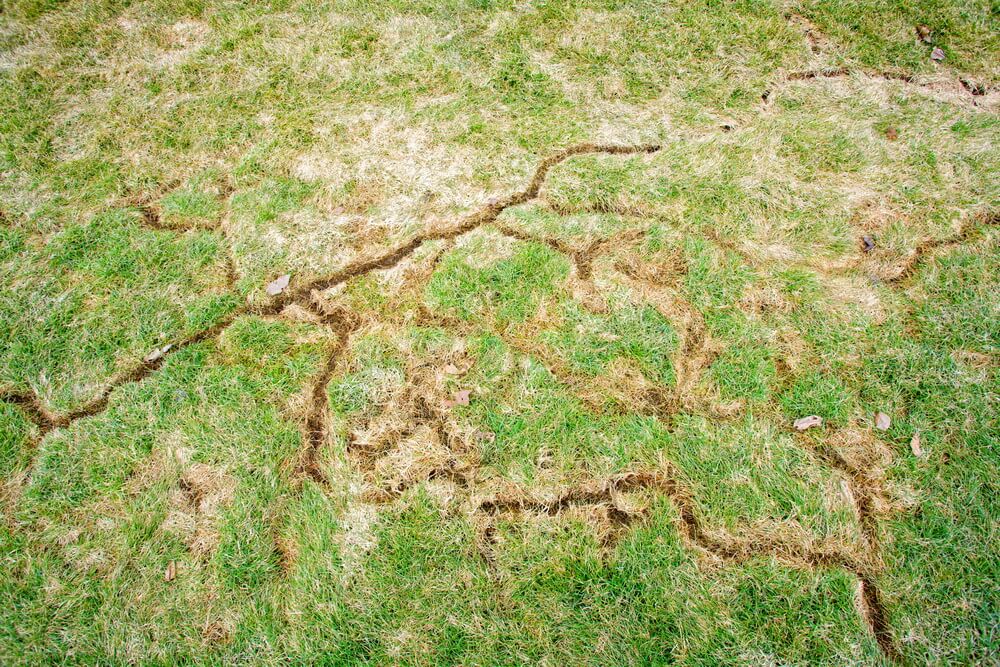
Trusted by families across the USA
Get rid of voles now
with our Ultrasonic lawn stakes
Protect your garden with upto 15% discount on multipacks
What is the fastest way to get rid of voles?
The fastest way of getting rid of voles will be a forceful ejection or killing them to discourage their breeding and infestation.
The use of repellent is effective in getting rid of them, and the following are some of the bests repellent to use:
Use an ultrasonic pest repellent
This is a quick and natrual method of eradicating voles, using sound waves to drive them out of the holes.
The Thanos® Solar Sonic Mole Repellent uses sonic audio pulse waves to penetrate the earth and generate a particularly unpleasant sound for burrowing pests.
When you place them on the grounds, they make annoying noise to the sub-terrain dwellers living underneath the grass or in the soil.
This product is mainly effective for voles in tunnels to repel them and kick them out of the tunnels.
Castor oil scent is offensive to voles
Pour in a spray bottle, connect with a hose, and spray your lawn with it.
You can do some perimeter cleaning and splash around in strategic areas where the voles could be breeding.
It is effective and home-friendly, as humans rarely notice its scent.
For vole pests deep in the soil or grass, use a smoker made from burning the castor oil with a wick, and apply it down the holes burrowed by the voles.
The smoke from burning it will penetrate through the voles’ tunnel system and clean them out in record time.
Voles hate the smell and cannot stand it. They leave any area with such scent as fast as possible and never go back.
Use granules baits
A bait may be a source of poison to plants, so avoid them.
Go for one that is beneficial to your plants, such as grain-based baits with zinc phosphide.
When you use them in the holes burrowed by voles, they eliminate the voles and put zinc and phosphide back into your plants to replenish lost nutrients.
It kills the voles when they eat it, though it does not harm other critters like dogs that eat the vole’s carcass.
For better results, put a scoop of the bait in each hole, and place rocks over them to prevent the voles from escaping.
Trusted by families across the USA
Get rid of voles now
with our Ultrasonic lawn stakes
Protect your garden with upto 15% discount on multipacks
What is a home remedy to get rid of voles?
Castor oil scent is offensive to voles as it is what they hate the most. It is natural, safe for use, and does not affect humans.
However, it is another story for voles as they cannot stand the smell, so they evacuate wherever it is laced with its scent.
Mix a portion of castor oil with liquid soap, and dilute with a gallon of water.
Spray or splash around the perimeter of your home, in burrowed holes, and your lawn and garden as vole pest control.
Other home remedies to eliminate voles and serve as pest control are:
Garlic
Garlic has a pungent smell, just like that help drive voles away.
For better results, create a spray solution by mincing garlic cloves and mixing with water.
You can also crush the garlic and drop it around the vegetative areas on your property.
Capsicum
This is an oil found in hot peppers and is excellent as vole pest control.
Its scent and taste are unpleasant to voles. Mix with water, and apply in a spray bottle, then apply on vegetation with vole presence.
Ammonia
This is another pungent chemical that is great for pest control on your property.
Ammonia can be easily washed off by rain when you spray around the runways, so it is best to disperse through the air.
To do this, first, get a piece of rag, a pair of gloves and a container with a lid.
Cut a hole into the container’s cap, wear your gloves and pour some ammonia into the container.
Soak the piece of rag in the ammonia, and hang it up through the lid’s hole. The ammonia scent will disperse through the air longer than when you pour or spray on runways.
Domestic Pets
Household pets like dogs and cats are natural pests repellent due to their predatory nature.
They will hunt down any rodent on sight, including mice, moles or voles, kill them, and may even bring them over to you for a headcount, in the case of cats.
They may also eat their carcass, so ensure the voles die through safe repellent and means to ensure your pets do not suffer from ingesting them.
Predators Urine
Voles are deathly afraid of predators’ urine like foxes or coyotes.
When a vole perceives the urine of fox or coyotes, it runs for its life.
You can purchase the urine at home improvement stores and spray around vegetation with voles present.
The scent of the urine will also repel other ground dwellers like moles.
Animals that reduce vole populations
There are animals like owls that feed on any small rodent, including mouse, mole, and vole.
These animals help to keep these pests from your property area. They keep your lawn and garden free of any problem you could get from voles.
Trusted by families across the USA
Everything you need for protecting your lawn
Get rid of burrowing pests like voles and moles
What attracts voles to your yard?
Before knowing how to get rid of voles in your yard, you need to understand what attracts them there.
Here is a list of things that attract voles to your yard:
- Meadows, weeds, dense, heavy vegetative covers in your yard attract voles
- Excess brush and mulch on your lawn.
- Woodpiles and corners around trees, shrubs, and gardens can serve as hiding areas for them.
- Untrimmed bushes and not mowed lawn is an attractive site for voles, as it can serve as a good hiding place.
- Bird feeders such as seeds, berries left in your yard and lawn attract voles in their numbers.
- Food sources like peanut butter as they are omnivores and can feed on it as well.
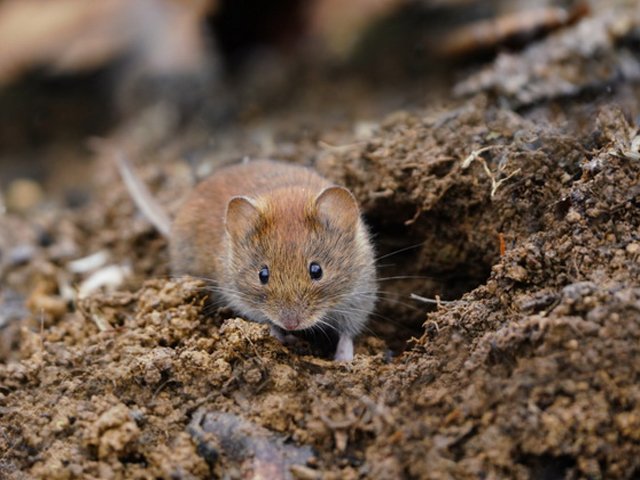
How do I get rid of voles in my garden?
Voles migrate from empty fields to gardens with fresh vegetation boasting of many trees, shrubs, and grasses.
If you have noticed that a place that once had plants has become clear, including its roots, you may have started suspecting vole damage.
The big question is how you can get rid of the voles in your garden and lawn before they get out of hand.
Here are ways to do so:
Alter their habitat
Leaf litters, weeds, ground covers in your garden are what any rodent, including mouse and vole, need to set up their habitat.
You should remove them by clearing them off and ensuring the area is neat and tidy always discourages voles from seeing it as potential habitat.
Avoid keeping mulch close to trees, and limit the ones around grass, as voles may dig up tunnels underneath them.
Plant annual crops that allow you to cultivate the soil as often as possible, repelling voles from inhabiting there.
Free your garden of any fallen nuts, bird seeds or berries that may attract voles.
Fence your garden
You can put up a barrier to keep voles out of your garden. You can install a wire mesh around your garden to prevent voles from entering.
Install cylinders made of hardware cloth of about 1/4 inches long to protect the plants in your garden.
It would be best if you buried the cylinders at least six inches below the ground to protect the plants by preventing the voles from burrowing and creating tunnels.
You can also employ tree guards for trees in your garden by wrapping their bases with a quarter wire mesh, plastic cylinders or sheet metal.
This helps to prevent girdling of the trees and destruction of their roots.
Use vole repellents
Solar sonic Vole repellents is a natural and safe way of repelling voles from your garden.
The Thanos® Solar Sonic Mole Repellent uses the solar power to send out bursts of strong sonic pulse waves at the exact frequency burrowing pests are highly susceptible to.
Set traps
If your garden is relatively small, you can employ live vole traps to control their population.
Live vole traps help trap voles and not kill them, as you have to let them out to the field once trapping occurs. The trap is best made in the winter season with a scarcity of food sources for them.
They will take any bait you place in the trap.
If you are trapping voles to kill, using poison in the bait is your best bet.
Set out several traps in your garden to capture as many voles as possible. Place the traps directly on identified surface runways in your garden to trap them as they leave and enter the surface runways.
Ensure you release the voles from the traps as soon as they are captured to allow for more trapping.
Monitor the trapping well. You can use a mouse trap with peanut butter as a bait to trap the voles.
Trusted by families across the USA
Everything you need for protecting your lawn
Get rid of burrowing pests like voles and moles
Cultivate vole-proof and vole-deterrent plants
There are specific plants known as vole-proof plants, as they scare voles away and prevent them from nesting in your garden.
Some plants also actively deter voles from habiting your garden.
Plants like castor bean, crown imperial and Hellebore are vole-proof.
While Daffodil, Ornamental onion, and Grape hyacinth are vole-deterrents. You can also employ any of the vole-deterrents as a live trap for them.
Conclusion
A vole is one of the mice species and is known as a pest since one small vole can lead to large populations of them in your garden, yard or home.
The fastest and the safetest way to eliminate it is to repel it.
Thanos Solar Sonic Vole Repellent is one of the best device to repel the vole effectively. It is safe for you and your family.
In fact, it’s so discreet that you won’t even know it’s there.
The least you can do to promote vole control is to keep your garden free of food sources, shelter materials and breeding environments.
Employ the above mentioned ways to eradicate it from your garden.
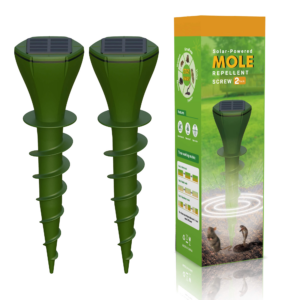 Screw Sonic SpikesSale
Screw Sonic SpikesSale
Product on saleStarting at $52.99Rated 4.33 out of 5 based on 3 customer ratings
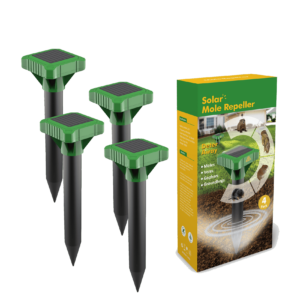 Upgraded Sonic Mole SpikeSale
Upgraded Sonic Mole SpikeSale
Product on saleStarting at $39.99Rated 4.83 out of 5 based on 6 customer ratings
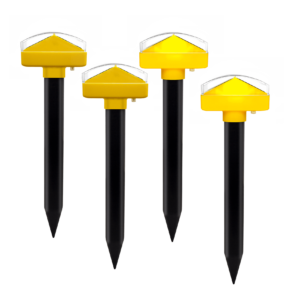 Sonic Mole Repellent With Night LightStarting at $10.90Rated 4.67 out of 5 based on 3 customer ratings
Sonic Mole Repellent With Night LightStarting at $10.90Rated 4.67 out of 5 based on 3 customer ratings
